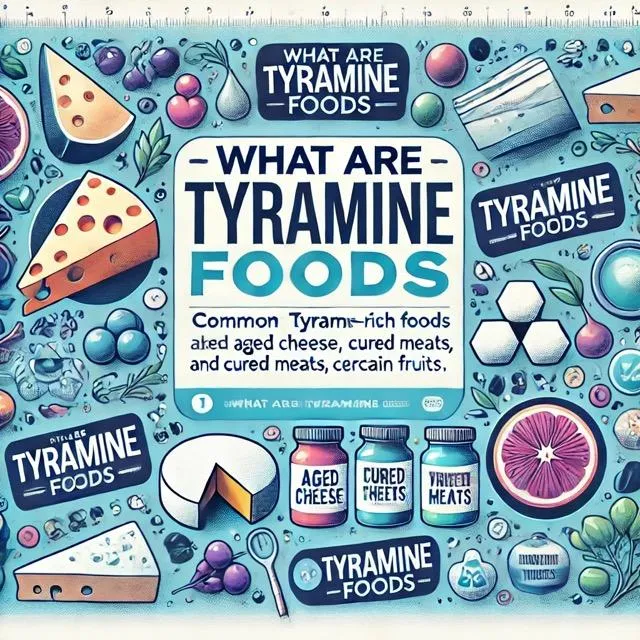Welcome To Your Personalised Nutrition Plan
200 Food Intolerance Hair Scan
A full Personalised food plan for only £49
This is a 200 food intolerance test. It is done with highly advanced bioresonace equipment. We use a hair sample that you must send us. It DOES NOT use blood. Once purchased we will email you the information we require and how to take the hair sample to send to us. Please give us 10 days turn around time for the results which we will email you. Usually we are faster than this!
Once purchased you will receive instructions on sending the sample to us.
Welcome To Your optimum metabolism
Your personalised nutrition plan
What's Body BioTyping?
Discover the hormonal secrets your body is hiding—find out the foods that exacerbate your unique profile.
Unveil the trendy diets that will truly transform you and those that maybe damaging you despite the current trend! You see..
One diet DOES NOT fit all.
And this isn't a one-size-fits-all menu; it's a bespoke nutrition blueprint tailored to your body shape, emotional eating patterns, and appetite—all revealed in this enlightening quiz.
Why do some diets work wonders for a few but flop for others?
With us, learn which foods and diet habits will elevate your well-being, which are neutral, and which to avoid.
Fine-tune your meal ratios and eating frequency for peak performance. Rev up your metabolism with a tailored macro-nutrient balance just for you, and find out the real deal on snacking.
You'll then be able to tweak your meals so they are in tune with your metabolism. Understand your body's needs and redefine your diet with us.
Want to feel:
Satisfied after and meal and not craving more food or sugar even though you feel full?
Want to lose weight without calorie restriction or hard dieting? Rather using a tailored health food plan that suits your metabolism.
Or maybe the opposite and you need to gain weight.
Want to feel emotional more stable rather than feeling shakey, jittery or "hangry"because you ate the wrong foods?
Want more energy as you are now supplying your body with the correct foods that suit your individual metabolism needs.
A Food Plan Specifically for YOU
What's Body BioTyping?
Have you noticed how we are all different shapes and sizes?
Or how foods affect everyone differently?
Or raher how foods affect your body differently to your friends?
How some people gain weight easily and others seem to eat loads and not gain any weight?
Or how you gain weight in particularly areas? Like tummy, bottom, hips, thighs?
Body Typing can explain these questions and give you tips towards healthy eating and lifestyle changes that are specific to your shape.
Did you know that particular areas of your body are sensitive to different hormones and therefore your body shape gives a clue to hormone imbalances? This works for men and women.
Once you know this hormone you can understand which foods to avoid as they will further create hormone imbalances. These hormone imbalance can cause weight gain

We want you to feel more of these:
Want to feel great?
✅ More energy overall
✅ A long lasting, balanced energy after a meal
✅ Full and satisfied after a meal but not bloated and “stuffed”.
✅ Emotionally happy and satisfied after a meal
✅ Losing weight if you want to
✅ Gaining weight if you want to
✅ No cravings for sugar, salt or fats after meal
✅ Improved mental awareness and no brain fog
And less of these:
❌ Energy slumps or crashes
❌ Not hungry or craving in-between meals or even shortly after meal
❌ Feeling too full and bloated after meals rather than satisfied
❌ Not getting blood sugar crashes after meals
❌ Not getting anxiety, worry or “hangry”
❌ Gaining weight without actually eating much

Is your metabolism fast or slow?
And there's even more...
What food Ratio's suit your metabolism
Is it possible to refine your ideal eating plan even more? Yes it is!
Hopefully you have done your Body BioTyping food plan and found your ideal food ratios and the foods that may not suit you due to your hormone dominance. All this was found our from your body shape and emotional characteristics.
We can also look deeper into how fast you process the foods you eat. A good word for this that you have probably heard is your metabolism. You can combine this with your Body BioTyping plan.
Ever noticed how some people eat loads and don’t gain weight and have loads of energy?
Or maybe how you just look at food and gain weight!?
Have you noticed that some foods can make you feel sluggish and others give you energy?
Finding out your metabolic rate can explain this and from there we can apply a food plan that takes this into account and SUPPORTS your metabolism so it ….
Peoples metabolism can be fast, slow and others somewhere in the middle. This is genetically how they are. If you ate local foods from where your genetic heritage originated from then the foods would balance your metabolism naturally. However, we don’t do that. Instead many of us base our diet on what’s in the new, on Instagram or is just the next “in” diet. Like intermittent fasting, vegan, vegetarian, carnivore. Some of these diets are the complete opposite of each other.
You can strengthen this metabolic rate by feeding it the correct foods. This brings it into balance. It might be that you want to slow it down or speed it up, to achieve BALANCE.
Confused about what diet is best for you? Say goodbye to guesswork!
Carnivore
Time restricted eating
Keto
Vegan
Vegetarian
16/8
Paleo
Meditarean
Pescatarean
5/2
High carb
Low carb
High fat
Balanced
Calorie restricted
Discover your ultimate wellness roadmap with our precise Hair Scan, pinpointing exact food intolerances that are holding back your health.
Dive into our tailored Quiz 1, matching your unique biotype to the diet that harmonises with your hormones.
Empower your journey with Quiz 2, revealing your metabolic rate to balance protein, fat, and carbs for peak energy.
Unleash a transformed you by personalising your eating
How It Works

Send us your hair
There are many variations of passages of Lorem Ipsum available, but the majority have suffered alteration in some form, by injected humour

Quiz 1
There are many variations of passages of Lorem Ipsum available, but the majority have suffered alteration in some form, by injected humour

Quiz 2
There are many variations of passages of Lorem Ipsum available, but the majority have suffered alteration in some form, by injected humour
Listen to Christian Bates, speak about the presonalised food plan approach

WelCome To Nutritionists
Body bio typing
There are many variations of passages of Lorem Ipsum available, but the majority have suffered.

WelCome To Nutritionists
Metabolism
There are many variations of passages of Lorem Ipsum available, but the majority have suffered.

WelCome To Nutritionists
Stress and skipping breakfast
There are many variations of passages of Lorem Ipsum available, but the majority have suffered.
More videos

WelCome To Nutritionists
Body bio typing
There are many variations of passages of Lorem Ipsum available, but the majority have suffered.

WelCome To Nutritionists
Metabolism
There are many variations of passages of Lorem Ipsum available, but the majority have suffered.

WelCome To Nutritionists
Stress and skipping breakfast
There are many variations of passages of Lorem Ipsum available, but the majority have suffered.
OUR TEAM
Meet Our Awesome Team




Blog & Articles

Tyramine foods; a migraine trigger
### Understanding Tyramine: A Natural Health Perspective
What is Tyramine?
Tyramine is a naturally occurring compound known as a biogenic amine. It is found in certain foods, particularly those that are aged, fermented, or processed. Tyramine plays a role in regulating blood pressure by affecting the release of norepinephrine, a neurotransmitter and hormone that influences the "fight or flight" response. While tyramine is not harmful to most people, some individuals, especially those taking certain medications or with tyramine sensitivity, can experience adverse effects when consuming tyramine-rich foods.
Tyramine is produced from the amino acid tyrosine as proteins in food break down, particularly during the aging or fermentation process. This is why foods like aged cheeses and fermented products tend to have higher tyramine levels.
Tyramine-Rich Foods
Tyramine is most commonly found in foods that have undergone aging, fermentation, or spoilage. Here are some common tyramine-rich foods:
1. Aged and Fermented Foods:
- Aged cheeses: Cheddar, Gouda, blue cheese, Parmesan, Swiss, and feta.
- Fermented foods: Sauerkraut, kimchi, soy sauce, miso, and tempeh.
- Processed meats: Salami, pepperoni, bologna, and other cured or smoked meats.
2. Alcoholic Beverages:
- Red wine: Contains higher levels of tyramine due to fermentation.
- Beer: Especially tap or unpasteurized beer.
- Aged spirits: Whiskey, bourbon, and other aged liquors.
3. Certain Fruits and Vegetables:
- Overripe fruits: Bananas, avocados, and tomatoes that have become overripe or spoiled.
- Fermented vegetables: Sauerkraut and pickles.
4. Soy Products:
- Soy sauce, tofu, miso, and tempeh are particularly high in tyramine due to fermentation.
5. Other Tyramine Sources:
- Yeast-containing products: Marmite, Vegemite, or other yeast extracts.
- Certain fish: Smoked or pickled fish like herring and mackerel.
Symptoms of Tyramine Sensitivity
For most people, tyramine does not cause any issues, and it’s simply broken down by an enzyme in the gut known as monoamine oxidase (MAO). However, when MAO activity is inhibited or reduced—either due to medications or natural sensitivity—the body may have difficulty processing tyramine, which can lead to an excessive release of norepinephrine. This can result in what's commonly known as a "tyramine reaction", where blood pressure spikes and other symptoms may occur.
Common symptoms of tyramine sensitivity or reaction include:
- Headaches or migraines: Tyramine is well-known for triggering migraines in susceptible individuals. People with migraine disorders are often advised to avoid tyramine-rich foods.
- Increased blood pressure: Tyramine causes the release of norepinephrine, which can lead to a rapid increase in blood pressure (called a hypertensive crisis in severe cases).
- Heart palpitations: Irregular or rapid heartbeats may occur after consuming tyramine.
- Sweating and flushing: Some individuals experience sweating, flushing, or feeling hot after eating foods high in tyramine.
- Nausea and vomiting: Digestive upset, including nausea, can occur in response to tyramine.
People who are taking monoamine oxidase inhibitors (MAOIs), a class of medications used for treating depression, Parkinson’s disease, and other conditions, are particularly susceptible to tyramine reactions. These medications block the enzyme that breaks down tyramine, allowing tyramine levels to rise quickly in the body, which can lead to severe blood pressure spikes.
Naturopathic Perspective on Managing Tyramine Sensitivity
For individuals who are sensitive to tyramine, managing tyramine intake is essential to avoiding symptoms. From a naturopathic perspective, addressing tyramine sensitivity involves dietary adjustments, stress management, and supporting overall neurotransmitter balance.
1. Low-Tyramine Diet:
The most straightforward approach to managing tyramine sensitivity is following a low-tyramine diet. This involves reducing or eliminating tyramine-rich foods, especially those that are aged, fermented, or highly processed. Some steps to take include:
- Eat fresh, non-processed foods: Focus on fresh meats, fruits, vegetables, and grains.
- Avoid aged and fermented products: Stay away from aged cheeses, fermented vegetables, and processed meats.
- Limit alcohol consumption: Particularly avoid red wine and aged spirits, as these are high in tyramine.
- Monitor fruit ripeness: Be mindful of consuming overly ripe fruits like bananas and avocados, as tyramine levels increase as these fruits age.
2. Support Gut Health:
Because tyramine is broken down in the gut, supporting optimal gut function may help individuals better tolerate tyramine-rich foods. Naturopathic strategies for gut health include:
- Probiotics: Certain strains of probiotics, such as Lactobacillus and Bifidobacterium, can support gut health and improve digestion, potentially helping with tyramine metabolism.
- Prebiotic fibers: Foods like garlic, onions, and asparagus (if tolerated) can feed beneficial gut bacteria and improve overall digestive function.
- Digestive enzymes: While there isn’t a specific enzyme supplement for tyramine, general digestive enzyme supplements can support overall gut health and digestion.
4. Migraine Prevention:
For individuals whose primary symptom of tyramine sensitivity is migraines, preventing migraines naturally is key:
- Magnesium: This mineral has been shown to help prevent migraines by supporting blood vessel health and reducing muscle tension. Magnesium-rich foods include spinach, almonds, and dark chocolate.
- Riboflavin (Vitamin B2): Riboflavin has been studied for its potential to reduce the frequency of migraines. It's found in foods like eggs, meat, and dairy.
5. Stress Management:
Since tyramine sensitivity can cause an exaggerated release of stress hormones, it’s important to manage stress levels naturally. Practices like yoga, meditation, and deep breathing exercises can help balance the body’s stress response and may reduce the severity of tyramine reactions.
6. Supplementation:
While most individuals with tyramine sensitivity can manage their symptoms with dietary adjustments, some may benefit from specific supplements:
- CoQ10: Coenzyme Q10 has been linked to reduced migraine frequency and better energy metabolism, making it potentially helpful for people sensitive to tyramine-induced migraines.
- N-acetylcysteine (NAC): This powerful antioxidant may support neurotransmitter balance and protect against oxidative stress caused by excess norepinephrine during a tyramine reaction.
Conclusion
Tyramine is a naturally occurring compound found in many aged and fermented foods. While it poses no problem for most people, those with tyramine sensitivity, or individuals taking MAOI medications, may experience adverse reactions such as migraines, high blood pressure, and digestive upset when consuming tyramine-rich foods. Managing tyramine sensitivity from a naturopathic perspective involves adopting a low-tyramine diet, supporting gut and cardiovascular health, and managing stress. By addressing these underlying factors, individuals can often reduce or prevent symptoms and improve overall well-being.
References
1. Gillman, P. K. “Monoamine Oxidase Inhibitors, Tyramine, and Drug Interactions.” Journal of Clinical Psychopharmacology, 2011.
2. Jansen, K. L., & Rogers, P. J. "Tyramine Levels in Common Foods and Beverages: Implications for Diet and MAOI Therapy." Journal of Neural Transmission, 2006.
3. Friedman, A. M. “Migraine and the Tyramine Connection.” Headache: The Journal of Head and Face Pain, 2008.
4. Collins, G. G., & Sandler, M. "Tyramine, Hypertension, and Diet: What Are the Implications for the Treatment of Depression?" Journal of Neurochemistry, 2010.
OUR TESTIMONIALS
What they’re talking about
our company

John Doe
Finance Manager
I loved the customer service you guys provided me. That was very nice and patient with questions I had. I would really like definitely come back here. Thank you for yours service

Jane Doe
Finance Manager
I loved the customer service you guys provided me. That was very nice and patient with questions I had. I would really like definitely come back here. Thank you for yours service

John Doe
Finance Manager
I loved the customer service you guys provided me. That was very nice and patient with questions I had. I would really like definitely come back here. Thank you for yours service
Frequetly Asked Question
Your Title Here
Lorem ipsum dolor sit amet, consectetur adipisicing elit. Autem dolore, alias, numquam enim ab voluptate id quam harum ducimus cupiditate similique quisquam et deserunt, recusandae.

Your Title Here
Lorem ipsum dolor sit amet, consectetur adipisicing elit. Autem dolore, alias, numquam enim ab voluptate id quam harum ducimus cupiditate similique quisquam et deserunt, recusandae.

Your Title Here
Lorem ipsum dolor sit amet, consectetur adipisicing elit. Autem dolore, alias, numquam enim ab voluptate id quam harum ducimus cupiditate similique quisquam et deserunt, recusandae.

Get In Touch
Assistance Hours
Mon – Sat 9:00am – 8:00pm
Sunday – CLOSED
Phone Number:
XXX-XXX-XXXX

